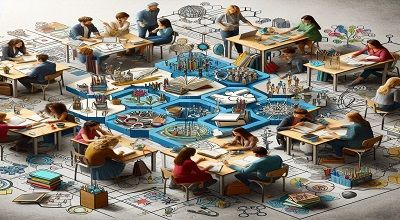Competency-Based Model of Teacher
Competency-Based Model of Teacher Education (CBTE) is an approach to teacher education that focuses on the demonstration of specific skills and knowledge that are relevant for effective teaching. CBTE aims to ensure that teachers are prepared to meet the diverse needs of learners. In various contexts and to adapt to changing educational demands.
CBTE is based on the following principles:
- Teachers are expected to master a set of competencies. That is aligned with professional standards and learning outcomes.
- Teachers are assessed on their performance of the competencies. Rather than on their completion of courses or hours of training.
- Teachers are provided with personalized and flexible learning opportunities that allow them to progress at their own pace and according to their needs and interests.
- Teachers are supported by mentors, coaches, and peers. Who provide feedback and guidance throughout their learning journey.
- Teachers are engaged in reflective practice and continuous improvement. That fosters their professional growth and development.
CBTE is not a new concept, but it has gained more attention and popularity in recent years. Especially in the context of K-12 education
Some of the benefits of CBTE include:
- It ensures that teachers have the necessary skills and knowledge to meet the expectations and challenges of their profession.
- It empowers teachers to take ownership and responsibility for their own learning and development.
- It promotes a culture of collaboration and innovation among teachers and other stakeholders.
- It enhances the quality and relevance of teacher education and its impact on student learning and achievement.
Some of the challenges of CBTE include:
- It requires a clear and comprehensive definition and framework of the competencies that teachers need to master.
- It demands a reliable and valid system of assessment and evaluation that measures the performance and outcomes of the competencies.
- It entails a significant shift in the roles and responsibilities of teacher educators, mentors, and administrators who support and facilitate the learning process.
- It involves a substantial investment of time, resources, and commitment from all the parties involved in the implementation and sustainability of CBTE.
CBTE is not a one-size-fits-all solution, but rather a flexible one. An adaptable model that can be tailored to different contexts and needs. CBTE is a promising and innovative way to prepare and develop teachers who are competent, confident, and committed to their profession.
What are some examples of competencies?
Some examples of competencies for teachers are:
- Interacting well with students: This means being able to positively interact with all students. Regardless of their abilities, backgrounds, or personalities.
- Creating a learning environment: This means being able to create a safe and conducive space for learning, where students feel respected, challenged, and supported.
- Good at lesson plan design: This means being able to design lesson plans that meet the standards, objectives, and needs of the students, using appropriate and varied instructional materials.
- Use varied teaching strategies: This means being able to use different methods and techniques to engage and motivate students. Such as lectures, discussions, projects, games, etc.
- Able to assess: This means being able to measure and evaluate the learning outcomes and performance of the students. Using reliable and valid assessments, such as tests, quizzes, portfolios, etc.
- Identify student needs: This means being able to recognize and address the academic, social, and emotional needs of the students. Using formal and informal data, as well as personal knowledge.
- Good at communication: This means being able to communicate effectively with parents, & colleagues. Other stakeholders use various modes and channels, such as emails, phone calls, meetings, etc.
